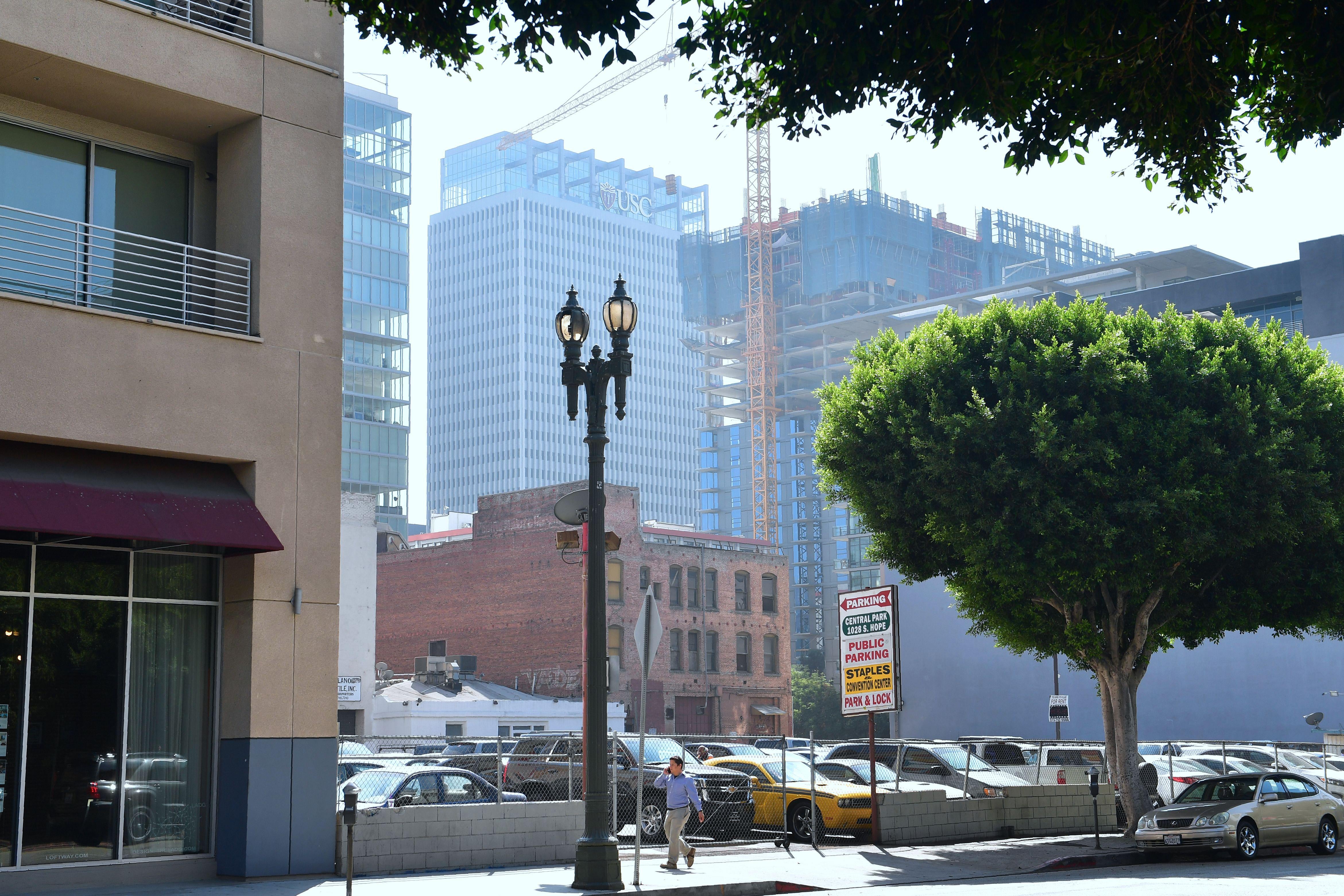One paradox of the housing affordability crisis in the United States is that one of the most popular ways to create affordable housing is to tax new housing.
In December, the Los Angeles City Council voted to create a permanent revenue stream for its affordable housing program by slapping a fee on new homes and apartments. The “linkage fee” ranges from $8 per square foot in South Central L.A to $15 on the city’s wealthy Westside. That will put a $15,000 surcharge on a 1,000-square-foot apartment in a place like Hollywood, with that money going toward the city’s efforts to create and preserve housing for low-income renters and the homeless.*
Affordable housing is desperately needed in Los Angeles, particularly for the homeless. But a new report from the Terner Center at U.C.–Berkeley shows that development fees—which pay not only for housing, but also for inspections, administrative services, parks, schools, and cultural amenities—here and elsewhere across California can have a significant impact on housing prices. Looking at seven California cities, the authors found city fees amounted to between 6 and 18 percent of the median home price.
The fees are one of many factors driving up the cost of buying or renting a home, including income inequality; restrictive zoning; high prices for land, materials, and labor; low construction productivity; and a historic slowdown in housing production. They’re not new. Hundreds of cities and counties have imposed fees on new development, which initially helped relieve local governments from subsidizing roads, sewers, and other expenses associated with suburban sprawl. Now that local governments face an affordable housing crisis with little federal assistance, fees are being levied to support affordable housing, too.
Like inclusionary zoning requirements—which incentivize or require builders to provide affordable units in their projects—the fees theoretically raise the cost of housing on the open market while providing a handful of heavily subsidized units. The two policies can be hard to distinguish: In L.A., developers can dodge fees by providing affordable units. In other cities, developers can avoid providing units by paying into a city fund.
The idea that new development should subsidize affordable housing is popular. “It’s very politically acceptable to implement these linkage fees,” said David Garcia, the policy director at Terner and one of the co-authors. “There’s a lot of literature that shows a lot of the time these fees don’t result in a ton of units and that it’s not the best way to address the affordable housing crisis. But it’s feasible.” This is especially true in California, where the tax revolts, especially the passage of the Proposition 13 property tax freeze, left cities with few reliable fundraising methods. When development fees replace property taxes as a funding source, the burden of supporting the safety net gets passed from current residents to future ones.
While fees rightly place a higher burden (as high as $150,000 a pop) on single-family homes, whose low density imposes environmental and infrastructural costs, the fees per bedroom wind up being higher, in most cases, on multifamily development. A single apartment bedroom in Irvine, California, bears an estimated $42,000 in fees. Developers often pass those fees on to new renters.
The report also describes a web of fees that have not been coordinated between city departments, so tangled that not even local architects, engineers, and developers can always accurately estimate how much it will cost to build. “These are the people designing the projects, intimately familiar with every aspect, and they cannot do that,” said Sarah Mawhorter, a co-author. That opacity drives small developers out of urban housing production, leaving an oligopoly of well-heeled, well-connected builders.
The paper’s estimates are conservative, since they don’t count utility fees or the impact of project-specific agreements, in which local politicians ask builders to provide particular amenities (including affordable housing) in exchange for permits. Nor do they count the complex trade-offs associated with inclusionary zoning ordinances, which often let builders build higher in exchange for providing affordable units.
This approach—making all new housing more expensive to make some housing very affordable—makes sense if you think of the housing market as permanently divided between market-rate luxury building and government-subsidized housing, with the former permanently unaffordable and the latter in perennially short supply. It’s true that the price gap is wide, but the idea of a sharply segmented market is a delusion. The reality is that few renters will ever secure a rent-controlled apartment, qualify for federal housing assistance, or win a lottery for the local affordable housing those fees provide. “You either win the lottery in a big way or you get no housing assistance whatsoever,” says Jenny Schuetz, a fellow at the Brookings Institution who studies housing policy. Most tenants simply pay more than what’s technically considered “affordable,” and when they write their checks, they may be paying for development fees, to
Correction, March 27, 2018: This post originally misstated that Los Angeles’ new linkage fee applied to new homes in Culver City. Culver City is not part of the city of L.A., so the linkage fee is not applicable there.
